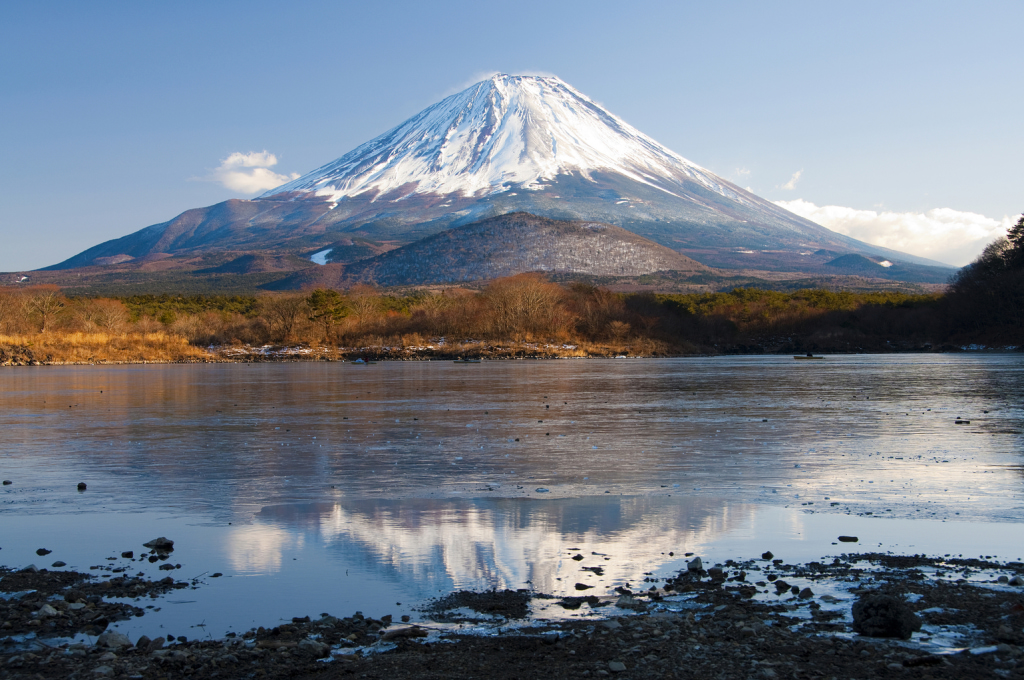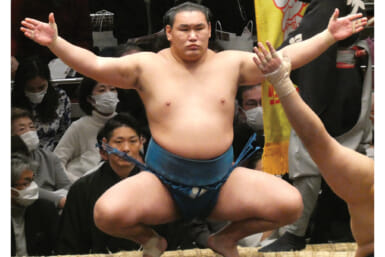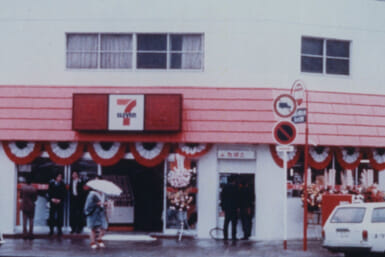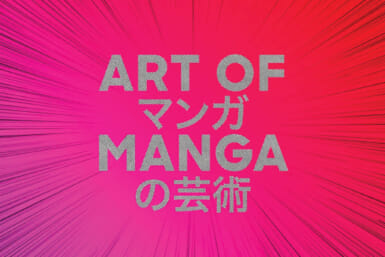Last month, at a summit in Cambodia, UNESCO granted World Heritage status to Mount Fuji, but one writer feels the future of this already iconic and popular volcano can only go downhill…
by Phil Colquhoun
Long synonymous with Japan and an enduring image of both the Shizuoka and Yamanashi prefectures it straddles, Mount Fuji’s new status – particularly for the business owners who live off it – is cause for celebration. The excitement, at least within the media, has been palpable, making it a near impossibility to switch on the TV without eager presenters frantically telling us where to buy Mount Fuji trinkets, how to hire a bike to ride around it or even where to eat Fuji shaped foodstuffs, with hikers in high demand for their vox pops on the latest induction to the UNESCO list.
“That the bestowal of the UNESCO tag could manifest into a threat to the very site it is seeking to celebrate is an irony that presents a very real dilemma for those in control of Mt. Fuji’s future”
The fuss created sits in quite stark contrast to the backdrop of the taciturn, stoic Mount Fuji, a picture of calm, its symmetrical, conical slopes shimmering as they reflect off the waters of nearby Lake Kawaguchi in much distributed and shared photos.
It is an image unchanged for millennia and one that is already protected under the Mount Fuji charter, an agreement made between Yamanashi and Shizuoka governments back in 1988 that ensures cooperation on the conservation of the region and a drive “to reduce the burden on the natural environment”.
Along with Mt. Etna, which also received World Heritage status this year, though, Mount Fuji requires neither the protection nor attention seeking promotion usually associated with receiving the honour. This leaves one to ponder what the bestowal of the UNESCO tag will mean for the area and, indeed, Japan as a whole.
Mount Fuji: ‘Object of Worship, Wellspring of Art’
So, how do you go about choosing a place to add to such a venerable list? Amongst UNESCO’s 10-point guide to selecting a World Heritage site are two that have this time around seen Mount Fuji pass. Firstly, the location must “bear a unique or at least exceptional testimony to a cultural tradition or to a civilization or be directly or tangibly associated with events or living traditions, with ideas, or with beliefs and artistic or literary works of outstanding universal significance.” Thus, anyone searching for Mount Fuji through the annals of UNESCO will now find it listed as a ‘cultural’ location, described as ‘Mount Fuji: Object of Worship, Wellspring of Art’.
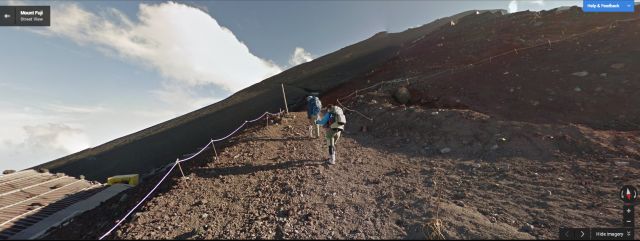
Climbers on Mount Fuji as seen by Google’s new Street View mapping project, which took us closer to the peak from our desks in Tokyo.
There is no question that Mount Fuji has been intrinsically linked to the development of artistic and literary works both in Japan and across the world. The image of the mountain, reproduced in the farthest reaches of the planet, on everything from brochures to school textbooks, is indeed an exceptional testimony to Japan. Having said this, what now are the implications of reaching the list? Will this create a lasting beneficial legacy? Will tourism spiral out of control to the detriment of the region? Or will the topic fall out of the collective consciousness as quickly as it arrived?
“Hiraizumi experienced a 30% increase in visitors in the 12 months following its UNESCO listing in 2011, while Ogasawara saw a 50% jump that has since been the root of growing tensions between locals and tourists”
No sooner had the announcement from the 37th annual UNESCO session in Phnom Penh been made, new restaurants and visitor centres had been thrown up in anticipation of the inevitable surge of people keen to scale the slopes.
Even before confirmation of induction, Nikkei.com reported a lift in stocks in Tokyo, particularly with travel and hiking goods companies and it is almost certain that the region will see a sharp increase in annual visitor numbers – around 6 million arrived in the area in 2012, with in the region of 300,000 making the climb.
Although an area easily accessible and accustomed to welcoming visitors from far and wide, a look at the experience of Japan’s other UNESCO sites paints a rather more troublesome picture of what might lay in wait.
Hiraizumi experienced a 30% increase in visitors in the 12 months following its UNESCO listing in 2011, while Ogasawara saw a 50% jump that has since been the root of growing tensions between locals and tourists. Various news outlets reported at the time that in the months following Ogasawara’s induction, damage to plant life on the islands spiked. Such was the apparent deliberateness of some of the destruction, this even resulted in complaints being lodged with the Metropolitan Police Department.
Along with Ogasawara, Japan has three other natural UNESCO sites: Yakushima, in Kagoshima prefecture; the Shirakami Sanchi Mountains, bordering Aomori and Akita; and the Shiretoko region of Hokkaido, and these have also struggled to balance development and increased visitor numbers with the protection of the region.
“Wave after wave of tourists wandering at will, leaving garbage and starting unauthorized fires for barbecues has meant that ever more stringent rules have been implemented to lessen the impact”
Wave after wave of tourists wandering at will, leaving garbage and starting unauthorized fires for barbecues has meant that ever more stringent rules have been implemented to lessen the impact. Visitors have had to be urged to stick to designated paths at Yakushima to avoid trampling delicate vegetation and Ogasawara now limits the numbers of tourists to certain areas of the islands, even imposing a time limit for visits to try and negate damage done. It wouldn’t take an unusually vivid imagination to envisage similar problems arising at Mount Fuji.
An increase in visitors, especially from overseas, would present a welcome boost for Japan particularly as international tourism is still recovering from the earthquake and tsunami of March 2011 (visitor numbers in the summer of 2012 were up on pre-2011 levels but there is still a concern things are not fully ‘back to normal’ from some quarters).
Perhaps taking note of the challenges encountered at other sites in Japan, Shizuoka and Yamanashi prefectures have been quick to take steps to try and avoid similar issues blighting Mount Fuji. Plans to introduce a controversial entrance fee to climb the mountain were already in the pipeline before the UNESCO announcement, with potential restrictions on visitor numbers also under consideration.
In a decisive and quite possibly necessary move, the money charged would be put towards conservation projects to negate the impact of an increase in climbers and this can only be applauded. A contribution of ¥1,000 per climber could be trialled as early as this summer, however a recent study by Kyoto University’s economics department has suggested a fee of around ¥7,000 would be required to balance sustainable visitor numbers.
That the bestowal of the UNESCO tag could manifest into a threat to the very site it is seeking to celebrate is an irony that presents a very real dilemma for those in control of the mountain’s future. Whilst the two prefectures should rightly be commended for seeking to preserve Mount Fuji, using the fees collected to improve trails and protect the environment, skeptics will inevitably view the proposed moves as opportunistic commercialization of the mountain, the tarnishing of a sacred area and the selling off of an experience that many consider to be almost a rite of passage.
The transition from national icon to World Heritage site must be carefully managed if the issues which arose at the country’s other sites are to be avoided. It is important that we allow Mount Fuji to represent an enduring and exceptional testimony to Japan’s living traditions rather than become a source of squabbling, bureaucracy, tension, red tape that will bring about the erosion of a once outstanding natural and culturally important area.
Image: Krishna.Wu / Shutterstock.com

